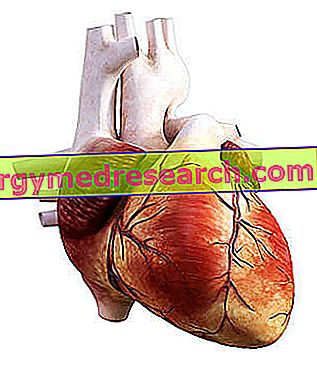Generality
Amfepramone, also called diethylcathinone and diethylpropion, is one of the simple psychoanalytic drugs with maximum psychoselectivity and adrenergic imprint; it is an amphetamine-like molecule, therefore with a stimulating action.
Note : currently drugs containing amfepramone are withdrawn from trade.
Examples of Medicinal Specialties Containing Amfepramone
- Linea ® - Revoked
- Regenon ® - Revoked
- Tepanil ® - Revoked.
Therapeutic indications
When is the use of amfepramone indicated?
In the past, amphetamine-like drugs have been used in the treatment of both schizophrenic and depressive psychoses; after the introduction of psychoelectric and antidepressant drugs, the use of amphetamines in antipsychotic therapy has no reason to exist, it is useless and can be harmful .
In general, the effects of amfepramone can be summarized as follows:
- Stimulation of psychomotor activity
- Disappearance of fatigue, fatigue and fatigue
- Stimulation of vigilance with relative difficulty in falling asleep or insomnia
- Reduced appetite with decreased food consumption and regression of obesity
- Peripheral sympathetic stimulation with vasoconstriction, tachycardia, tendency to hypertension and coronary spasms.
Does amfepramone make you lose weight?
The most recent cases of therapeutic use of amfepramone were for anorectic purposes (appetite suppression), due to its important central stimulation function. However, since August 2011 this molecule has been framed as narcotic due to the occurrence of suspicious deaths, probably related to the use of amfepramone.
DECREE 2 August 2011
Updating and completion of the tables containing the indication of narcotic and psychotropic substances, as per the decree of the President of the Republic 9 October 1990, n. 309 and subsequent amendments and additions. Relocation to Table I of the substances Amfepramone (diethylpropion), Fendimetrazine, Fentermine and Mazindole. (11A10727) (OJ General Series No. 180 of 4 August 2011)
- In table I of article 14 of the decree of the President of the Republic of 9 October 1990, n. 309, the following substances are added, according to the alphabetical order:
- Amfepramone, common name 2- (diethylamine) propiophenone, chemical name Diethylpropion, other name
- Fendimetrazine, common name (+) - (2S, 3S) -3, 4-dimethyl-2-phenylmorpholine, chemical name Phentermine, common name Alpha, alpha-dimethylphenylethylamine, chemical name Mazindol, common name 5- (para-chlorophenyl) - 2, 5-dihydro-3H-imidazo [2, 1-a] isoindol-5-ol, chemical name.
Warnings
Warnings and precautions for the use of amfepramone
In cases of alcoholism there may be an increase in intoxication, thus increasing the danger. Amfepramone, like other amphetamines-like, can induce an erroneous feeling of security in one's mental faculties, inducing the subject to perform acts not allowed by the state of drunkenness. Finally, it should be remembered that amphetamines can cause addiction by themselves.
Contraindications
When amfepramone should not be used
Contraindications to the use of amphetamino-like - minor for amfepramone compared to other molecules:
- Arterial hypertension, heart disease and coronary heart disease
- All hypersympatheticotonia states
- Anxious and manic states, psychoses, prepsychotic states.
Action Mechanism
How does amfepramone work?
Amfepramone acts blandly on dopaminergic and serotonergic systems, but has an efficacy 10 to 20 times higher in noradrenrenic mechanisms.
Bibliography
- From psyche to soma. Psycho-Pharmacology Manual; 219: 226 - II edition - Adriano Marino - Piccin nuuova libraria; Dr. Francesco Vallardi publishing house; Italian publishing company
- Official Journal of the Italian Republic - Decree of 2 August 2011 - Update and completion of the tables containing the indication of narcotic and psychotropic substances.



